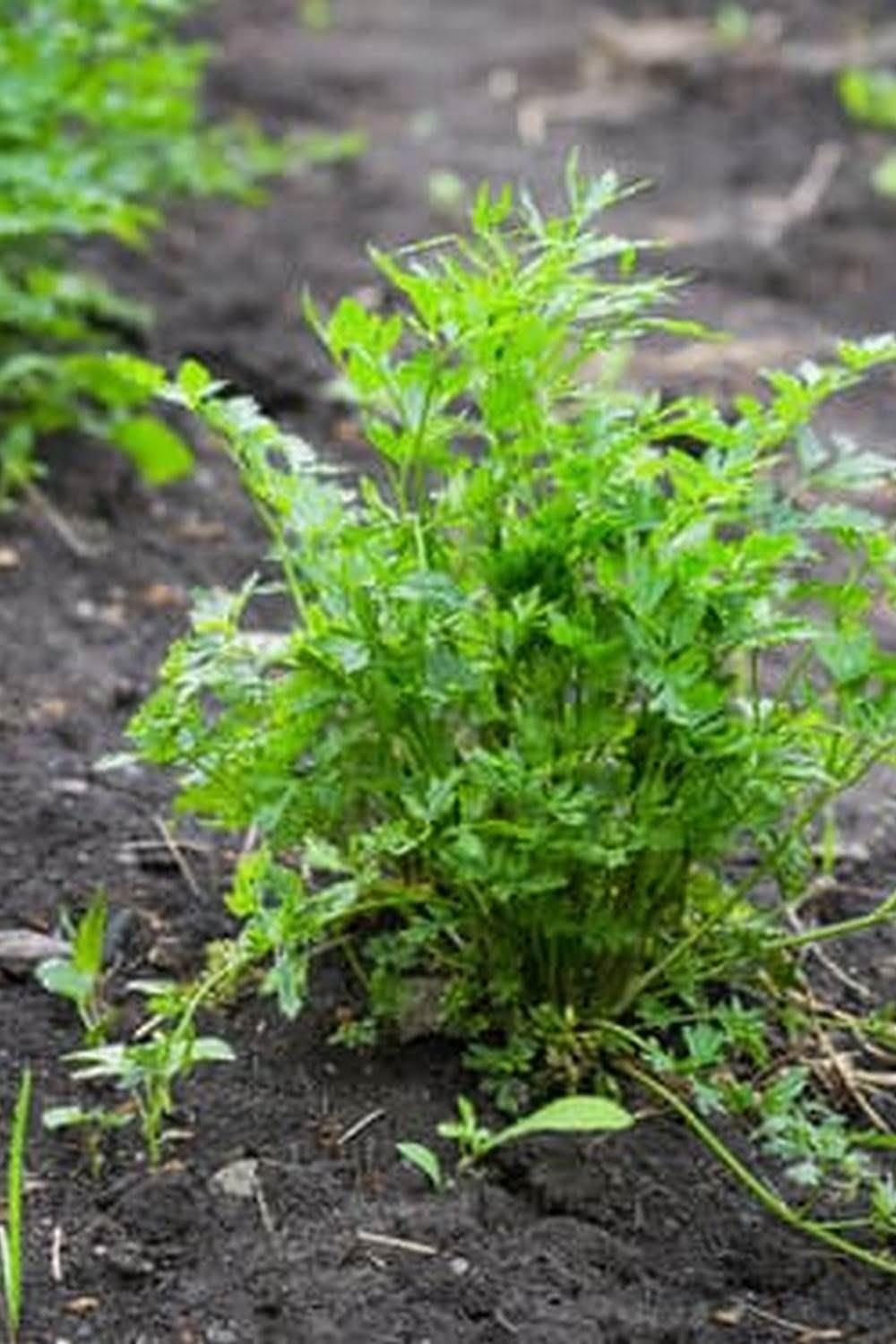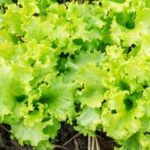Introduction
Ants are a frustrating and damaging garden pest. They can severely damage your vegetable garden, affecting the quality and quantity of the fruits or vegetables you harvest. Ants will destroy crops, prevent the germination of newly planted seeds, feed on seedlings, weaken plant stems and cause root rot in some cases.
To protect your vegetable garden from their detrimental effects, it is important to understand what attracts ants, how to identify ant activity occurring in your garden, how to stop them from destroying your plants and what preventive measures you can put in place.
Ants are highly attracted to sweet foods or sugary sources like sap from damaged or infected plants, as well as honeydew produced by aphids and other small insects. Therefore, one way of preventing ants from entering your vegetable patch is to discourage insect infestations by regularly inspecting your plants for signs of damage and pests such as aphids. Additionally keep your garden free of any sweet waste such as fallen fruit that could attract more ants into the area.
You may also want to install physical barriers around vulnerable plants such as thick mulches or diatomaceous earth which is made up of fossilized aquatic organisms. This creates a physical barrier against ants preventing them from accessing roots, stems or leaves. Other than that there are numerous types of homemade ant traps available which can provide effective control over these pesky critters without resorting to using chemical products which can be toxic for plants and animals alike.
Identifying Common Ant Species and Their Unique Habits
Different species of ants can be identified by their size and color, as well as their physical habits. Common species of ants known for invading vegetable gardens include odorous house ants (Tapinoma sessile), pavement ants (Tetramorium caespitum) and Argentine ants (Linepithema humile).
Odorous house ants are small, ranging from 1/16 to 1/8 of an inch long, and usually either black or brown in color. They emit a coconut-like odor when crushed, which is how they got their name. These ants often travel long distances in search of food—up to 300 feet! They also like to nest indoors and outside near decaying matter and prefer sweet foods, making fruit trees a potential target for these pests.
Pavement ants are slightly larger than odorous house ants, ranging in sizes from 1/8 to 3/16ths inch long. They are dark brown or black in color with pale legs and antennae. Pavement ant colonies typically live underneath the soil along paved surfaces such as driveways, sidewalks, or even patios. Their diet consists of almost anything sweet or greasy – sugar but also proteins like seeds, nuts, and insects – so it’s important to restrict availability of both food types near your garden beds since these little predators may accidentally cause damage during their travels from one food source to another.
Argentine ants are even smaller than odorous house ants at only 1/16 inch long—about half the size! Usually light brown to yellowish-brown in color with six legs and two antennae segments that distinguish them from other species. Argentine colonies vary greatly in size and can contain up to 500 thousand workers plus multiple queens. Unlike other ant species that prefer sweet nectars and proteins, Argentine ant colonies prefer plant sap-sucking insects such as aphids making them frequent intruders on leafy vegetables including lettuce, beans and peas as well as herbs like parsley or mint.
Creating Ant-Proof Barriers Around a Vegetable Garden
To prevent ants from killing a vegetable garden, one of the best and most effective measures to take is to create ant-proof barriers around the area. This can be done in a variety of ways, depending on the size of the garden. In smaller gardens, simply placing a thick layer of mulch around the plants can go a long way in deterring pests like ants. The mulch should be applied in such a manner that it would not allow any ants to penetrate through to the base of the plants’ stems or roots. Another option is to spray diatomaceous earth around the edges of the garden to keep ants out; while this doesn’t create an impenetrable barrier, it will hinder their progress into and throughout the garden. For larger areas, however, laying down ant bait or traps could prove more successful, as this will similarly disrupt any anthills that may have formed near or within the picking areas and significantly reduce infestations over time. With just a bit of hard work and dedication you can keep your vegetable garden safe from these annoying pests!
The Benefits of Various Natural Ant-Fighting Techniques
One natural technique for fighting off an infestation of ants in a vegetable garden is to reduce the number of sources of food. Keep the area weed-free and avoid leaving scraps of food lying around, since these are likely to attract more ants. Additionally, sprinkling diatomaceous earth near problem areas can be effective. This is a substance made up of fossilized algae that gets into the exoskeleton of insects like ants, making it impossible for them to absorb moisture and leading to their death. Other potential solutions include cayenne pepper and citrus peels, which create an unpleasant smell and taste that ants do not like. Vinegar and hot water can also be used around plants, as the acidity deters most ant species. Finally, setting out shallow trays of beer may help lure any wandering ants away from your garden and far away from your precious vegetables.
Non-Invasive Solutions for Existing Ant Populations
If you’re trying to get rid of ants in your vegetable garden without using chemicals, there are several options available. One way is to set up physical barriers that prevent the ants from entering the garden. This could include things like sticky tape around stakes, crushed granite or sand spread along entry points into the garden, or a combination of both. These barriers should be applied early in the season when the ant population is still low and reapplied as necessary throughout the growing season.
An additional solution for keeping ants out of your vegetable garden is to create a variety of edible bait traps that can attract and contain an existing ant population. It’s important to be mindful of what types of bait you use depending on which type of ant has infested your garden. If sugar-craving ants have invaded, then you will want to offer them something sweet like honey or sugar water. Protein-hungry ants would do better with peanut butter or corn meal. Place these traps at strategic locations throughout your vegetable bed and monitor them regularly to determine how effective they are in keeping ants at bay.
Finally, some gardeners find success with natural sprays and repellents such as neem oil products or garlic/pepper solutions. These can be periodically sprayed around plants and along entry points into the vegetable garden to effectively keep away insects such as ants without risking any lasting harm to other beneficial insects present in your yard.
Advice for Gardeners on the Best Ways to Combat Ants
If you have ants in your vegetable garden, it can be a challenge to control them without damaging the produce. The first step to controlling ants is knowing which type of ant species you’re dealing with and understanding its behavior. Carpenter ants, fire ants, and Pharaoh ants all have different characteristics and habits.
Once you identify the type of ant in your garden, you can take action using various preventive methods such as spraying insecticides or using bait traps. To spray insecticides, select a product that contains pyrethrin or bifenthrin, two organic compounds that are effective at killing ants without harming the environment. Follow product instructions and respray areas that were previously treated every few weeks for continued control of the pest population.
Baiting is another effective strategy for getting rid of garden ants. Place bait containers near highly infested areas to draw out their population. Baiting generally works best at night when many ant species become active, restocking bait boxes regularly until the ant population diminishes significantly or disappears entirely.
Lastly, preventing further intrusion by sealing off potential entry points around trees or garden beds with caulk will help reduce ant numbers. Additionally clearing away plant debris from walkways and other areas where they breed as well as removing any nearby food sources are key steps towards eliminating pests from your vegetable garden altogether.
Conclusion
To prevent future ant invasions in your vegetable garden, consider taking the following steps:
1. Reduce possible food sources and eliminate nesting sites near the garden by regularly maintaining any trash, pet food and other objects that may be attracting them.
2. Place bait stations with an ant-specific insecticide near areas where ants are active, and refill if necessary.
3. Plant specific plants known to repel ants like lemongrass, mint, garlic and lavender around the perimeter of your garden.
4. Create a natural barrier between the garden and any ants entering it by sprinkling diatomaceous earth or cinnamon along ant trails and around plants susceptible to being invaded.
5. Severe infestations may require professional assistance or a homemade non-toxic repellant of chili pepper extract, white vinegar or diluted citrus oil applied over a two week period until the ants are gone for good!

If you’re looking to get into vegetable gardening, or are just looking for some tips on how to make your current garden better, then you’ve come to the right place! My name is Ethel and I have been gardening for years. In this blog, I’m going to share with you some of my best tips on how to create a successful vegetable garden.





